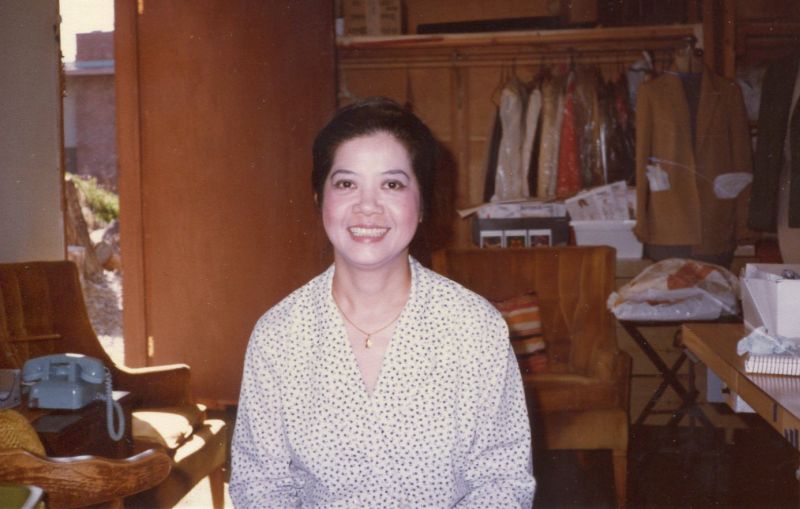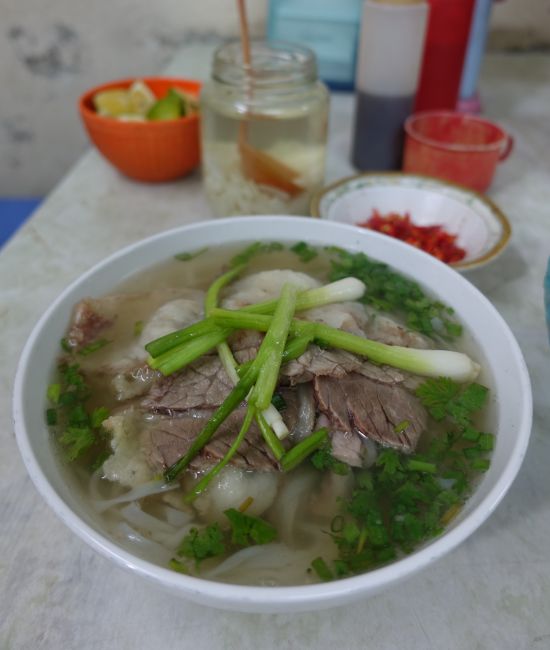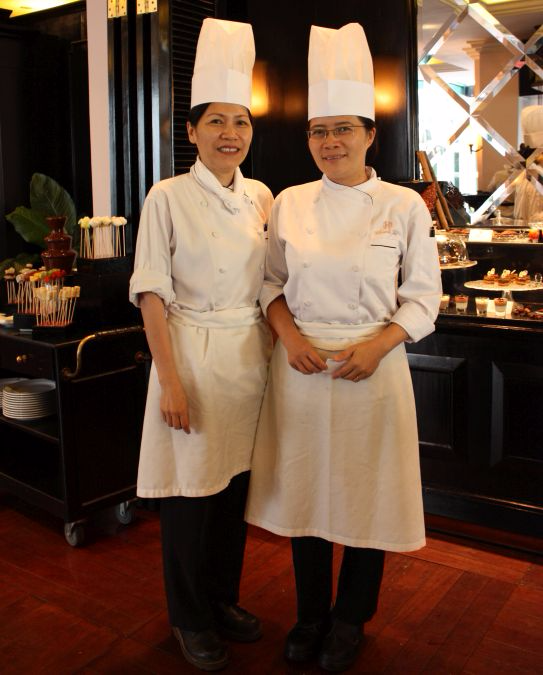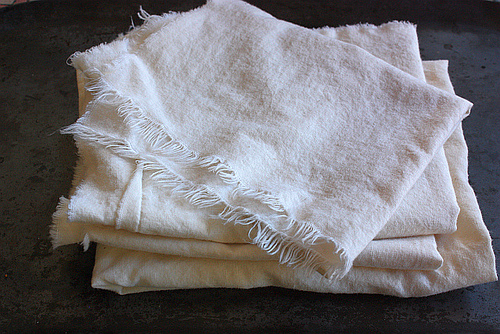When my mom came to America in 1975, she faced challenges like starting a new career, negotiating a foreign society, and raising five kids with my dad. She also wanted to feed herself and our family good food. On the trip from Vietnam, she packed a small orange notebook of hand-written recipes of foods that she thought she’d need an assist with recreating in her new home.
I just realized this week that pho was not one of recipes in her orange notebook of domesticity. She knew how to make it by heart. However, translating the pho recipe from Vietnam to America wasn’t easy, and she often consulted with friends on the weekends, when long distance phone rates were cheaper. (If you’re old enough, you recall saving money by dialing on weekends and in the late evenings.) Mom’s Vietnamese-American community of home cooks shared a lot of tips and tricks. It’s hard to be Viet without pho in your life.
There were tweaks to pho recipes brought from the motherland. For example, pho crafted in America employs yellow onion instead of shallot. Yellow onion is traditionally a pricey ingredient in Vietnam and small shallots (hanh huong, fragrant onion) resembling red boiling onions in size are the go-to for everyday cooking and pho broth. If you were lucky back in Vietnam, my mom later explained to me, you’d get some sliced yellow onion (hanh tay, western onion) in your pho as a garnish.
That explains the proliferation of slender green onions in many pho bowls in Vietnam. Once in a while, you get yellow onion but in the main, green onions shower the bowls, like this one below from Hanoi.
Imagine Viet cooks’ surprise at the size of yellow onions in America! It must have been a boon. Who wants to char and peel a bunch of small red onions? The upshot of the yellow onion in the broth is that it made the broth a little sweeter. That’s okay because most Viet refugees to America came from Saigon where the flavor of the pho leaned toward the sweet side of savory. Yellow onion in pho broth is what I grew up with and am used to.
When I researched Hanoi-style pho in 2010, two women chefs in their 50s, Nguyen Thanh Van and Nguyen Thi Kim Hai, told me that if I wanted to make true Vietnamese, Hanoi-style pho, I had to forget about using yellow onion. The chefs knew of my recipes in Into the Vietnamese Kitchen (they’d read the book) and said that shallot helps to build the flavor of pho in Hanoi. Shallot has a pungency that’s stronger than yellow onion.
The other thing that the lady chefs asked me about was this: “Why do you put fish sauce into the broth when you’re simmering it?” I told them that I liked how it flavored the meat. They said that fish sauce should be added toward the end.
Having observed my mom sharing food and cooking knowledge, I appreciated their generosity. Some cooks are reluctant to offer insights for fear of me stealing their trade secrets; I tell them that I'm a writer, not a restaurant owner who will set up shop to compete with them.
My outreach (cry for help!) paid off handsomely because when I went back home and tinkered with Hanoi-style pho, I realized that the chefs were right. The shallot was subtle and not overly sweet like yellow onion. The fish sauce imparted umami bursts best at the end of the line, rather than being a low-key player in the broth. My experience with the Hanoi chefs taught me to open up more, to ask other cooks to contribute their knowledge so we can all become better in the kitchen.
Using muslin in my kitchen is another thing I learned from my mom. For pho, I use muslin to strain the broth. I also use it for making soy milk, squeezing moisture out of wet ingredients like cucumber for salads.
The lightweight fabric (details and sourcing are here) keeps out impurities and often lets through just the right amount of fat. My mom doesn’t use muslin but she does have recycled cotton rice bags that she has saved since the 1970s and 80s. It’s that light fabric (rarely does rice get sold in fabric anymore!) and my frustrations with expensive, single-use cheesecloth that led me to use muslin.
The most important pho lesson that my mom taught me was that I can make pho, that anyone can do it through practice. In 2004 when I told her that I needed to learn how to make pho for Into the Vietnamese Kitchen, she told me all she knew. When I had questions, he helped me work through them.
My mother never once told me that she slaved over a pho pot or, that I was foolish for trying to tackle Vietnam’s national dish. Food is valuable but it’s not precious. My mom came to America and made damn good pho (and a zillion other dishes) for our family while managing her own tailoring business and figuring out how to negotiate American society.
A handful of Vietnamese-Americans have told me how their moms have said that pho requires a prolonged, overnight simmer; that it is far too complicate for cooks of the younger generation to tackle. I told my mom about those conversations and she looked confused and incredulous. “Maybe those older cooks didn’t know or want to explain to their kids how to make pho,” Mom said. “Pho is not difficult.”
Like many mothers, mine has empowered me in many ways. How has yours inspired you in the kitchen?
Happy Mother’s Day to all Moms!
Upcoming Pho Events: Tune in this Thursday at 1pm to catch my Cherry Bombe radio conversation with editor Kerry Diamond. I'm doing the interview in person because I'll be in New York! Maybe I'll see you at the Food Book Fair on Sunday, 5/14? There's an interesting panel on diversity in food media and then I'll be doing a pho signing. After New York, I'll be in Boston on May 18 for a special pho evening with legendary Christopher Kimball at his new Milk Street Kitchen.





















